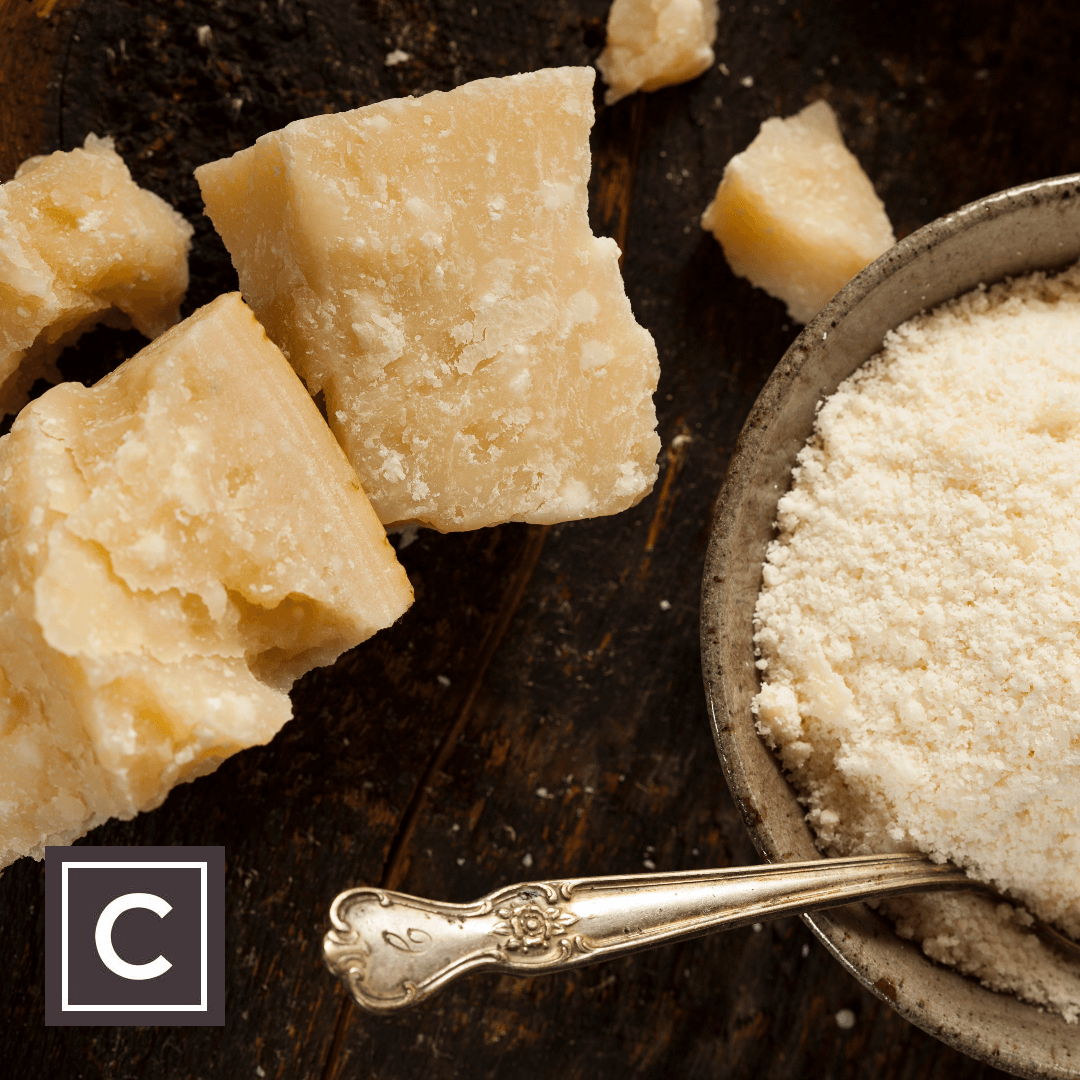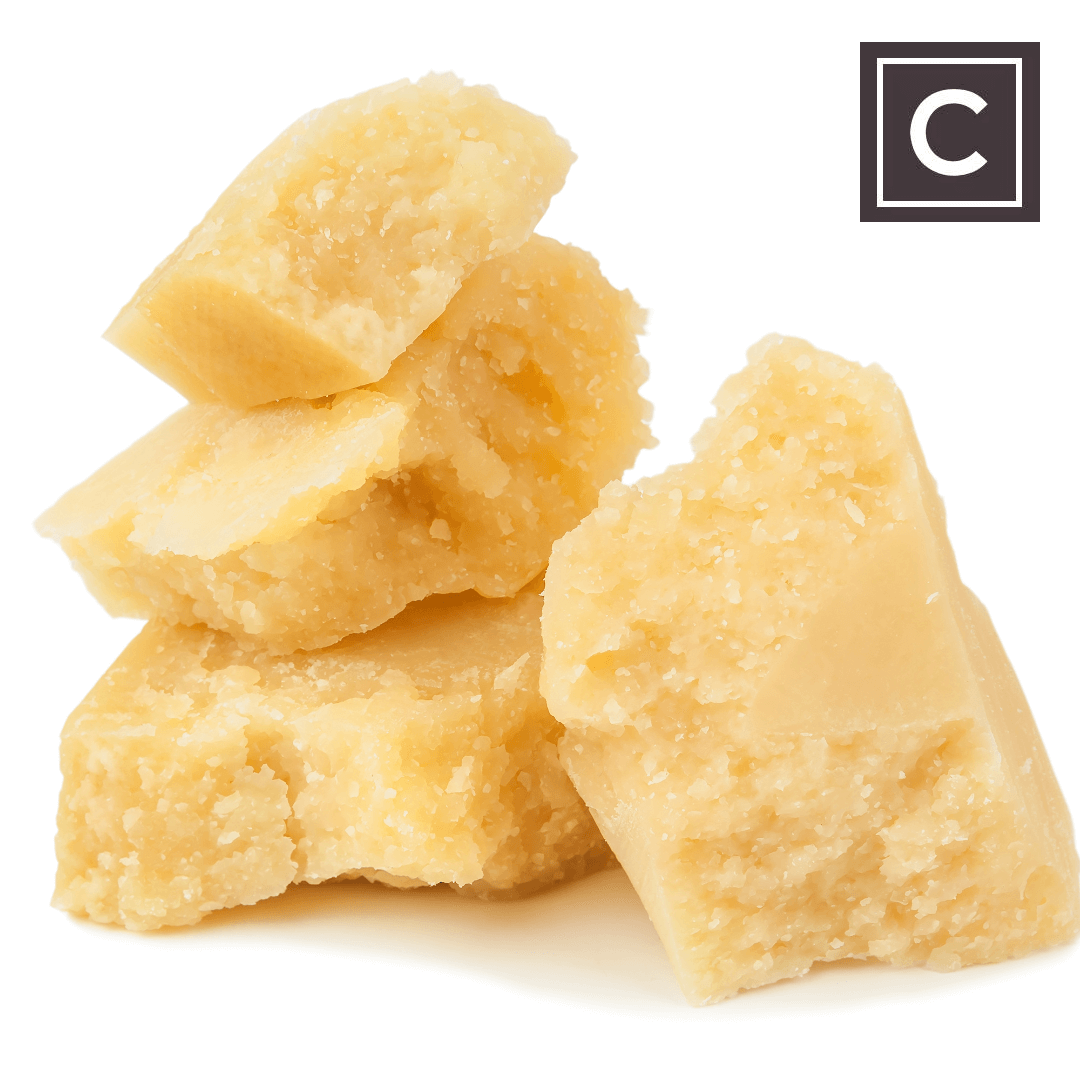Ingredient Glossary: Parmesan
Posted by Emily on 1st Dec 2019 Reading Time:
This is a robustly flavoured Italian matured hard cheese and a favourite addition to pasta dishes and many more. Learn about Parmesan's PDO credentials, how to select the finest quality, and what recipes to use it in.
What is Parmesan?
Parmesan is a straw-hued hard cheese featuring a natural yellow rind and a complex, fruity taste. Originating from cow's milk, Italy's Parmigiano Reggiano is the archetypal Parmesan. Although similar imitations are now produced in countries like Argentina, Australia, and the US, the authentic Italian variety remains unparalleled. Its superior quality is attributable to an extended maturation period of approximately two years instead of the mandatory minimum of 12 months. Genuine Italian Parmesan has 'Parmigiano Reggiano' imprinted on the rind and enjoys Protected Designation of Origin (PDO) status, ensuring that only cheese from specific Italian regions and made through traditional methods can bear the name 'Parmesan.'
Parmesan is amongst various foods, including truffles, mushrooms, and miso, that induce the umami flavour profile on your palate. Are you curious to learn about umami and its impact on your cooking?
How to Prepare Parmesan
Peel, chop, or grate as needed. If serving on a cheese board, remove it from the fridge 1-2 hours in advance to allow the flavours and aroma to emerge fully.
How to Cook with Parmesan
Grate over pasta or incorporate into pasta sauces (note: traditionally, Italians refrain from using it in fish or seafood sauces), sprinkle slender shavings on salads, use in making pesto, or pair as a dessert cheese with figs or pears.
How to Store Parmesan
Wrap in greaseproof paper and refrigerate for up to two months. Should mould appear on the surface, scrape it off; the underlying cheese should remain edible.
Availability of Parmesan
Parmesan is accessible year-round.
Choosing the Best Parmesan
Pre-grated Parmesan deteriorates in flavour quickly; thus, it's advisable to avoid purchasing it in tubs or bags. Always opt for Parmesan in a solid chunk, which you can cut at home as needed. Whenever possible, buy from a location where you can witness the piece being cut from the whole cheese. Authentic Parmigiano Reggiano should bear its name and production year stamped on the rind. Steer clear of Parmesan that appears grey or waxy.
Parmesan can be found at varying maturity stages. 'Giovane' is the youngest at 14-18 months, 'vecchio' is matured between 18 months and two years, 'stravecchio' from two to three years, and the extra-mature 'stravecchione' is aged from three to four years. The older the cheese, the pricier it gets; younger cheeses are more budget-friendly for cooking, whereas the rich flavour of mature Parmesan is best savoured as a dessert cheese. As with all cheeses, purchasing small quantities regularly is advisable to ensure optimal freshness.
Parmesan is produced using traditional rennet, an enzyme mixture extracted from the stomachs of animals, which means it's not strictly vegetarian. Vegetarian alternatives are available but are labelled as 'Italian hard cheese.'
Alternatives to Parmesan
Consider Grana Padano as an alternative.
What to Make with Parmesan
Why not try our punchy, umami-rich Caesar Dressing Recipe?



